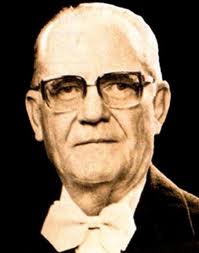
26 anos da operação OPERA, único ataque à uma instalação nuclear na história mundial. 100% de sucesso, destruindo o alvo sem perdas.
26 Years Since the Baghdad Nuclear Reactor Bombing
Thursday 07/06/2007 16:05
4 pm, the evening before the Shavout holiday, 1981, orders were given to begin operations. At 5:35.a squadron of IAF F-16 fighter aircraft flew over Iraqi skies and dropped a number of bombs. The nuclear reactor was completely destroyed. Mission accomplished. One after another, the pilots shouted the code word "Alpha" into their radios, signaling their success. Zev Raz, Amus Yadlin, Chagi katz, Amir Nahumi, Yiftach Spector, Yisraeli Shapir, and Ilan Ramon- changed history, erasing the nuclear threat of the enemy.
Today, the 7th of June, the IDF commemorated the 26th anniversary of the Iraq nuclear reactor bombing- the surgical strike was nicknamed- "Operation Opera".
"A large clock is hanging over us, ticking."
Iraq established a nuclear program in the 60's and with the cooperation of the USSR built a nuclear reactor ten km's southeast of Baghdad. 16 years later, Iraq began to broaden their nuclear programs and were supported by France who provided them with a nuclear reactor. The reactor consisted of two buildings, the "Tamuz" 1- the first reactor that produced uranium, and the "Tamuz" 2. The Israeli government convened to discuss the growing nuclear threat in that region. Israel was doubtful abou Iraq's claims that the nuclear program was for the benefit of its citizens. Their doubt increased when the IDF Intelligence Branch published intelligence reports that Iraq's operations posed a real threat to Israel's very existence- and Israel was forced to draw up plans to destroy the reactor.
On the 14th of May, the Prime Minister of Israel, Menachem Begin, authorized the bombing of the nuclear reactor. Ezer Wiezmen, the then Defense Minister, opposed the operation and resigned from the government two weeks later. On the 28th of October of that year, the plan was finalized. During a cabinet meeting the plan was formally authorized by Begin. "A large clock is hanging over us, ticking. Iraq's intent to produce nuclear weapons poses a great danger to every man woman and child in the state of Israel", the prime minister remarked.
The plan was kept in complete secrecy. From the get-go it was understood that the most effective way to implement a successful mission would be one conducted by the Israeli Air Force. It was decided that the operations would be done by F-16 fighter aircrafts that the IAF had received the year before. An Israeli Air Force squadron of 8 F-16's heavily armed, as well as a number of F-15's providing air cover and fighter support would implement the mission. One of the primary focuses during the planning stage was which direction the planes would fly. (11,000 km each way), over hostile territory and with a limited supply of fuel dictated the flight path. The plan was set for the seventh of July, zero hour-30 minutes before sunset.
"We flew over the Tigris river, looking down we saw the nuclear reactor. Our target lay before us clear as day."
The pilots that participated in the mission were selected for their impeccable flight records and were trained in secret and requested to implement the operations with no second thoughts. In the afternoon hours of the 6th of June, the plan was set in motion. All the members of F-16 squadron were called up for duty. On the morning of June 7th, 1981 8 F-16 fighter aircrafts left Israeli airspace heading west towards the Tigris River, next to Baghdad. The flight to Iraq took upwards to an hour. Radio transmission was silenced. The Iraqis were caught completely off guard. The Iraqi radar system was incapable of picking up on the impending danger.
Major General Amus Yaldun, one of the eight combat pilots that participated in the mission and now head of the IDF Intelligence Branch, related, during an interview with IAF journalists, about the famous flight. "Each aircraft flew with three full tanks of gas, two air to air missiles and two bombs each weighing one ton. We flew in two groups of four. The first group was led by Colonel (res.) Zev Raz, the "First Jet" squadron leader, and the second group was lead by Brigadier General (res.)Amir Nehomi, commander of the "Northern Knights". I was number two in the first quadroon. We headed south of the Jordon River, passing over the Saudi desert. We reached the Tigris River in a short amount of time. The blast of the first bombs echoed in the distance. One of them hit the center of the reactors roof. Once the bombs were releases, I felt the impact of the explosions shaking my plane. This was the end of the Iraqi nuclear reactor "Tamuz" 1." The Israeli planes made a roundabout turn west, heading home. "The direction home was facing the sun as to prevent the enemy from following us. We received report of the second squadron's attack on the reactor. We felt great. A- Because of completing the mission and B- Because all of us, the whole squadron, had come home in peace."
http://www1.idf.il/DOVER/site/mainpage. ... d=63360.EN

